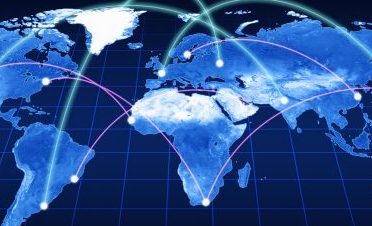Blog Post
Insight: Conservative Utah’s Successful Globalism
By: Randy Shumway
Editor’s note: The Kem C. Gardner Policy Institute from time to time publishes blogs from thought leaders in our community. The opinions expressed are those of the author alone and do not reflect an institutional position of the Gardner Policy Institute. We hope the opinions shared contribute to the marketplace of ideas and help people as they formulate their own INFORMED DECISIONS™.
Like all states in the union, my home state of Utah has benefited tremendously from the effects of globalization and cooperation. Our state and local governments have built a global economic engagement model that expands markets and collaboration, and minimizes barriers. Salt Lake County alone exports over $10 billion in products every year, and 22% of Utah jobs are supported by exports.
Utah has been recognized as the best state for job growth (U.S. News 2017), and the best state for business for three years running (Forbes 2014–2016). The Pew Center identified Utah as the “best managed state in the nation,” and Ogden, Provo, and Salt Lake County are leading the nation in job growth and entrepreneurial support. Utah has built not only one of the fastest growing but also one of the most diversified economies in the country. More importantly, during a time in which the United States is experiencing an increasing divide between its richest and poorest populations, the Salt Lake valley boasts the country’s highest rate of absolute upward mobility (Bloomberg).
So how has Utah done it? Certainly not by closing trade and building walls—quite the opposite actually. State and local governments have promoted growth in three key ways: (1) fostering public-private partnerships, (2) establishing intergovernmental cooperation initiatives, and (3) upgrading technological education to boost jobs. The state’s proactive, strategic approach leverages input from public institutions, private companies, educational organizations, and active citizens.
Utah has invested in the development of several important public-private partnerships, including the World Trade Center Utah and Envision Utah. These partnerships stimulate critical dialogue, information exchange, and—most importantly—cooperation and engagement. For example, Envision Utah supported planning and infrastructure investment for what is honored as an “outstanding” public transportation system by the non-partisan American Public Transportation Association.
The World Trade Center Utah connects local companies with global business markets via trade missions and trade promotion activities. WTC Utah often leverages the state’s uniquely-high concentration of international language speakers and close-knit foreign diaspora populations in these missions. The organization is also currently collaborating with the State of Utah and the Salt Lake County to create an innovative inland port in the Salt Lake valley. Having a public-private institution carry out these responsibilities has been extremely helpful in ensuring government and private individuals and organizations work together in ways that benefit the state both economically and socially.
State and local government leaders also work closely together to connect Utah companies with global markets. For example, Governor Herbert has personally led active trade missions, and Salt Lake County Mayor Ben McAdams has promoted foreign direct investment in Salt Lake’s foreign trade zone and inland port initiative. Many leaders in municipalities, counties, and state government have crafted solutions to minimize regulatory barriers, eliminate fiefdoms, and cross political boundaries—thereby prioritizing the common good over jurisdictional self-interest. In this case, tearing down walls, rather than building them, has been the catalyst that has generated new avenues of economic opportunity.
Technology firms in Utah have partnered with higher education and the state government in creating a new IT education pathway for Utah schools. This win-win-win collaboration boosts the number of well-trained IT professionals available to fill the growing labor demand in the state. Utah’s economy will benefit for years to come because tech jobs tend to pay well, attract employees, and create products that succeed in the export market. By increasing monetary leverage per job created, Utah’s new IT education pathway drives economic growth. Eliminating possible export market opportunities for these high-wage, high-skill jobs is detrimental to say the least.
A Rising Tide Lifts All Boats
The U.S. has already tried building walls without success: think of the Hawley-Smoot tariffs just before the start of the Great Depression. Times were similar then and politicians pushed for protectionism and isolationism on the heels of rapid economic expansion and global dissatisfaction. Rather than “bringing jobs back,” trade walls brought economic stagnation and depression, and fueled a massive world war. Walls and barriers favor special interests, create monopolies, and entrench complacency—all of which are antithetical to efficiency, quality, and broad-based growth.
Building walls and establishing barriers is not a viable economic solution. The nation’s leaders should instead nurture economic growth with strategies like those that have succeeded in Utah: building partnerships, expanding cooperation, and developing an educated workforce.
Author Description: Randy Shumway is the founder and chairman of the Cicero Group (www.cicerogroup.com), a consulting company based in Utah. Luke Jowers also contributed to this piece.






